After looking back at the biggest business stories of 2023 on Dec. 9 and revisiting some of the year’s wackiest tales last Saturday, it’s time to review the most impactful news events in Mexico during the past 12 months.
This year, we had events, issues and achievements that were, and are:
Unprecedented
The strongest hurricane to have ever made landfall on Mexico’s Pacific coast; the selection of female presidential candidates by all of the major political parties.
Tragic and concerning
A detention center fire that claimed the lives of dozens of migrants; hot-weather related deaths and drought; dozens of fatal accidents.
Of major importance to Mexico’s relationship with the United States
The fight against fentanyl; record high migration.
Of great significance to the future of Mexico
The opening of major infrastructure projects; Supreme Court rulings against government policies; the nomination of two women as candidates for the major parties in 2024.
Without further ado, let’s look back at some of the biggest news stories in Mexico in 2023.
Hurricane Otis devastates Acapulco after making landfall as a Cat. 5 storm
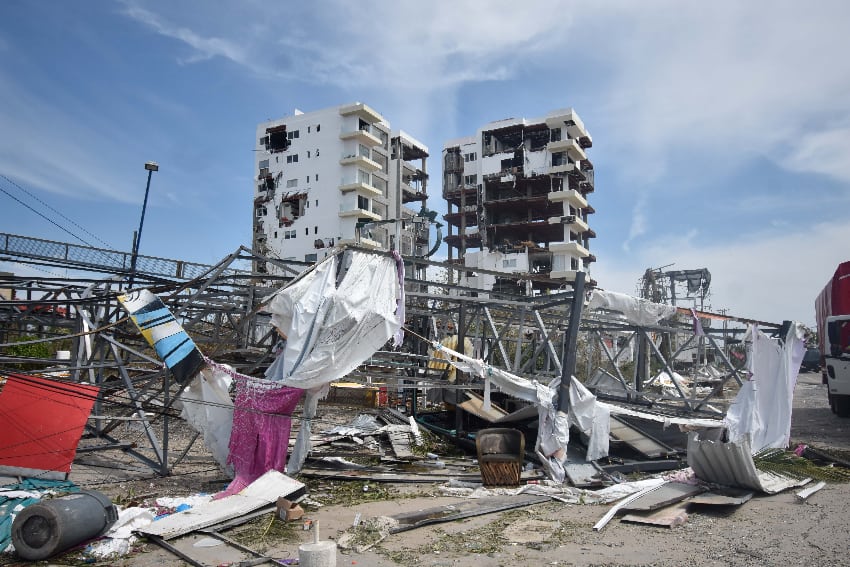
For the foreseeable future, there will be a distinct “before” and “after” Oct. 25, 2023, for the residents of the resort city of Acapulco.
Hurricane Otis slammed into the Guerrero coast as a powerful Category 5 hurricane shortly after midnight on that fateful day, wreaking havoc on Acapulco and nearby areas of the southern state.
Almost two months after the initial devastation, the effects of the storm are still visible in Acapulco and recovery efforts are ongoing, but on a positive note the local tourism industry — the city’s lifeblood — is slowly coming back to life.
The hurricane death toll is officially 52 with 32 additional people classified as missing, but the accuracy of the government’s numbers has been widely questioned, including by Acapulco residents and the local bureau of the Quadratín news agency.
The federal government announced a 61.3-billion-peso, 20-point hurricane recovery plan on Nov. 1, but authorities were criticized for what was seen as a lackluster initial response to the disaster, and concerns remain about the capacity of many Acapulco residents to get back on their feet.
Otis strengthened from a tropical storm to a major hurricane extremely rapidly, catching authorities, residents and tourists off guard.
President López Obrador said two days after the hurricane hit that Otis was an “extraordinary phenomenon” whose rapid strengthening was unprecedented.
However, he asserted that residents and tourists did receive sufficient warning prior to the storm’s arrival, and said they took shelter as best as they could.
Otis was one of four hurricanes to make landfall in Mexico during the 2023 Pacific hurricane season. The others were Hillary (downgraded to tropical storm status before reaching Baja California), Lidia (Cat. 4 at landfall in Jalisco) and Norma (Cat. 1 at landfall in Baja California Sur).
None of those came close to the strength of, or caused anywhere near as much damage as, Otis — a major hurricane of the highest order and quite possibly the biggest story in Mexico this year.
Women selected to represent major parties at 2024 presidential election

Seven weeks before Otis barged through Acapulco, there were two days that were among the most significant in Mexican politics this year.
Xóchitl Gálvez, a federal senator, was officially designated as the “coordinator” of the Broad Front for Mexico opposition alliance on Sept. 3, four days after it was revealed that she had prevailed in the three-party bloc’s process to select a candidate for the 2024 presidential election.
On Sept. 6, the ruling Morena party announced that former Mexico City mayor Claudia Sheinbaum had won the contest to become its new standard bearer and 2024 presidential candidate, leaving runner-up, former foreign affairs minister Marcelo Ebrard, with a bad case of sour grapes.
Gálvez, an indigenous Otomí woman from Hidalgo, will represent the National Action Party, the Institutional Revolutionary Party and the Democratic Revolution Party — a left-right alliance now known as Strength and Heart for Mexico — at the June 2, 2024 election, while Sheinbaum, the granddaughter of European Jewish immigrants who describes herself as “more Mexican than mole,” will stand as the candidate for Morena and its allies, namely the Labor Party and the Ecological Green Party of Mexico.
It will be the first time that two women backed by Mexico’s major political parties will face off at a presidential election, making it almost certain that Mexicans will get their first ever female president on Oct. 1, 2024, the day the victor will be sworn in.
“Xóchitl and Claudia were chosen by their respective parties as the most competitive candidates from a pool of mostly men,” Mexico News Daily chief news editor Kate Bohné noted in a recent article on the rise of women in Mexican politics.
President López Obrador has already handed over a symbolic “baton of command” to Sheinbaum, anointing her as the new leader of his “fourth transformation” political project, while Gálvez emerged from relative obscurity at the beginning of the year to become one of Mexico’s best known politicians.
Earlier in the year, we examined what both a Sheinbaum presidency and a Gálvez presidency might look like.
So who’s going to win next June? Polls have consistently found that Sheinbaum has a clear advantage over Gálvez, and one recent one concluded that the former mayor and political protégé of López Obrador has double the support of the National Action Party senator.
The two women are currently the only confirmed candidates for next year’s presidential election, but the Citizens Movement party has indicated it will also field a candidate. Nuevo León Governor Samuel García — probably Mexico’s best known politician under the age of 40 — was set to be that person, but he withdrew from the contest earlier this month amid political turmoil in his home state.
While the major parties’ selection of Sheinbaum and Gálvez as their new flag bearers was major news in Mexico this year, the election of one of them as Mexico’s first female president next June has the potential to be the biggest story of 2024. We’ll be watching closely.
Migrant detention center fire kills 40, but immigration chief keeps his job
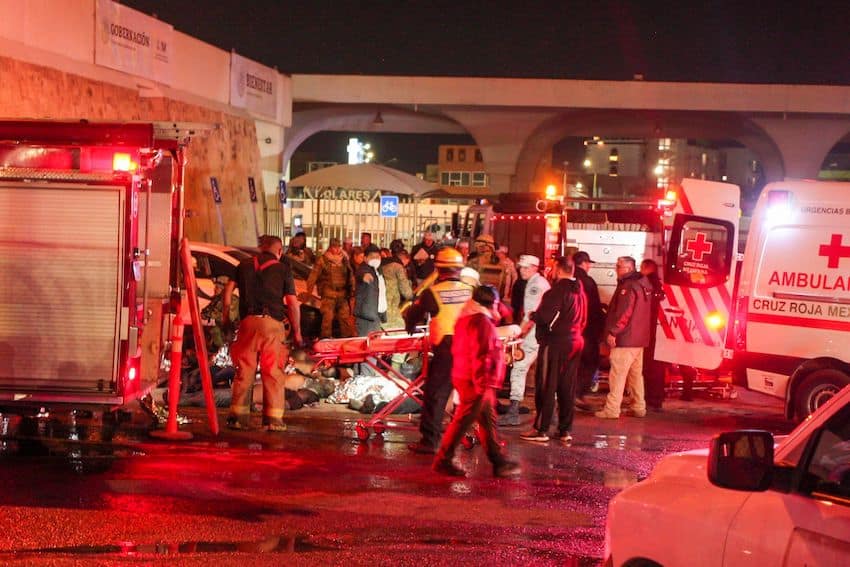
After Hurricane Otis, the single event that cost the most lives in Mexico this year was the fire that engulfed a migrant detention center in Ciudad Juárez on March 27.
Forty Central American and South American men were killed and close to 30 others were injured.
A Venezuelan man allegedly started the fire by setting mattresses alight when he and other migrants were informed that they were going to be deported or moved to another immigration facility.
Video footage posted to social media in the aftermath of the tragedy showed that migrants were left in a locked section of the provisional detention center in the Chihuahua border city despite the outbreak of a fire that ultimately claimed many of their lives.
In late April, National Immigration Institute (INM) director Francisco Garduño was formally accused of improper exercise of public service in connection with the deadly blaze. Other INM officials face criminal charges, including homicide.
Garduño and another high-ranking INM official allegedly committed “criminal conduct” by “failing to fulfill their duty to supervise, protect and provide security to the people and facilities” under their control, according to the Federal Attorney General’s Office.
Despite being charged, Garduño remains head of the INM as he awaits trial, even though President López Obrador accepted that that the governments of countries mourning the deaths of their citizens in the fire were “right” to demand the resignation of Mexican immigration officials.
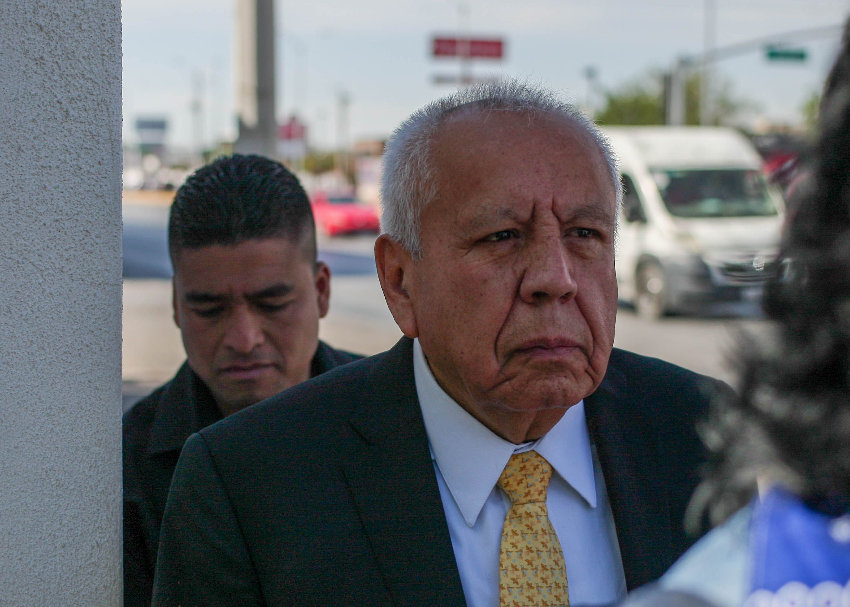
Emilio Álvarez Icaza, an independent federal senator and former head of the Inter-American Commission on Human Rights, described the detention center fire tragedy as a “state crime” and López Obrador’s “Ayotzinapa,” a reference to the 43 students who were abducted and presumably murdered during the presidency of Enrique Peña Nieto.
The families of the 40 migrants killed in the fire were awarded 3.5 million pesos (about US $205,000) each in government compensation — cold comfort for the loss of their loved ones.
Shortly after the tragedy, we reported on the abuses migrants have allegedly suffered while detained at government detention centers since Garduño became Mexico’s immigration chief. Those allegations were detailed in more than 50 National Human Rights Commission reports dating back to 2019.
Government projects open in a flurry as the end of AMLO’s term draws nigh
In his last full year in office before handing over the presidential sash to his successor next October, President López Obrador has been eager to inaugurate the major infrastructure projects initiated by his government.
After presiding over the official openings of the Felipe Ángeles International Airport and the new Pemex oil refinery in 2022 (even though the refinery was unfinished), AMLO has inaugurated a number of other projects in 2023.
This month has been — and will continue to be — particularly busy. The army-built Tulum airport opened Dec. 1, while three sections of the Maya Train railroad between Campeche and Cancún went into operation last week.
Both projects have the potential to significantly boost economic growth in Mexico’s historically disadvantaged southeast in the years ahead, as does the Interoceanic Corridor of the Isthmus of Tehuantepec, a still-under-development trade corridor that includes a newly-inaugurated railroad between the Pacific and Gulf of Mexico coasts that has been touted as an alternative to the Panama Canal.
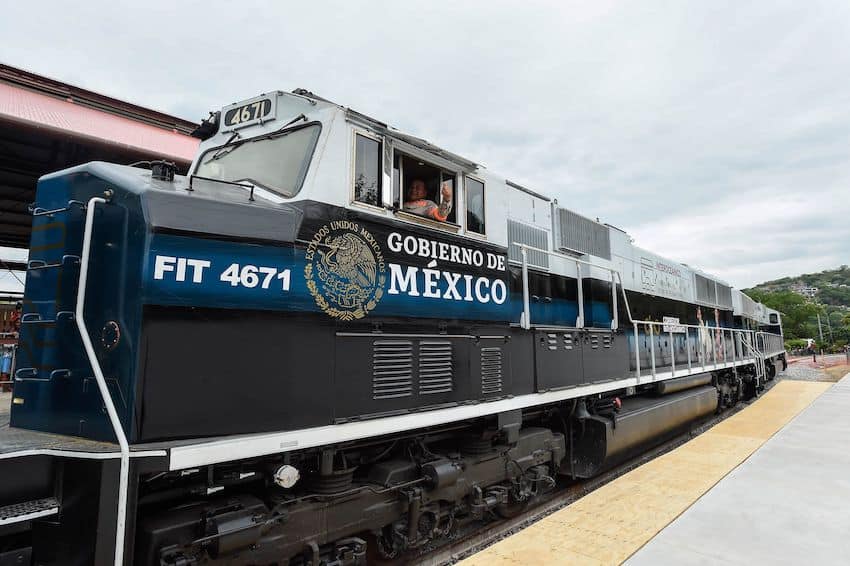
Another stretch of the Maya Train railroad between Cancún and Palenque, Chiapas, is scheduled to open Dec. 31, while Mexico’s new state-owned commercial airline, which will operate under the revived Mexicana de Aviación brand, will take off for its inaugural flight on Dec. 26.
Among the other projects AMLO has already inaugurated this year is the Mexico City-Toluca passenger railroad, a section of which began operations on Sept. 15, nine years after construction began.
The infrastructure projects commenced by the current government — which are not without their critics — have spurred the Mexican economy, particularly the construction sector, and will be an important part of López Obrador’s political legacy.
Consequently, it is no surprise that AMLO has been so eager to inaugurate the projects while he is still in office, as he seeks to be seen as a president who doesn’t just make promises, but delivers on them as well.
Homicides down, but violence still a major problem

The federal government has made much of the decline in homicides this year, but the reality is that Mexico still has a serious violence problem.
Let’s first take a look at the murder numbers.
There were 27,354 homicides in the first 11 months of 2023, according to government data, for a daily average of 82 murders.
The average number of daily homicides between January and November is almost 10% lower than the average of 91 recorded in 2022, during which there were a total of 33,287 murders.
While 2023 will almost certainly be the least violent year since 2016 in terms of total homicides, violence remains a major problem in various parts of Mexico, including in certain municipalities in Guanajuato, México state, Baja California, Chihuahua, Jalisco and Michoacán — the six most violent states in the first 11 months of the year.
Among the acts of violence we reported on this year were an armed attack on a Ciudad Juárez prison — on the very first day of 2023 — that left 17 people dead; an arson attack on a bar in San Luis Río Colorado, Sonora, that claimed 11 lives; the murder of five young men in Lagos de Moreno, Jalisco, whose deaths were confirmed by the publication of a horrifying video; the killing of two U.S. citizens in Matamoros, Tamaulipas; a confrontation in México state that left 14 people dead; and the massacre last Sunday of 12 attendees of a Christmas party in Salvatierra, Guanajuato.
Police and journalists were the victims in other violent incidents we covered this year, such as a bomb attack in Jalisco that claimed the lives of six people including four officers, and the murder of a veteran crime reporter in Puebla.
Authorities were the aggressors in other acts of violence: soldiers are accused of murdering five men in Nuevo Laredo, Tamaulipas, in February, and five other men in the same city in May. In Nuevo Laredo in April, National Guard officers allegedly killed two people, including a pregnant 15-year-old.
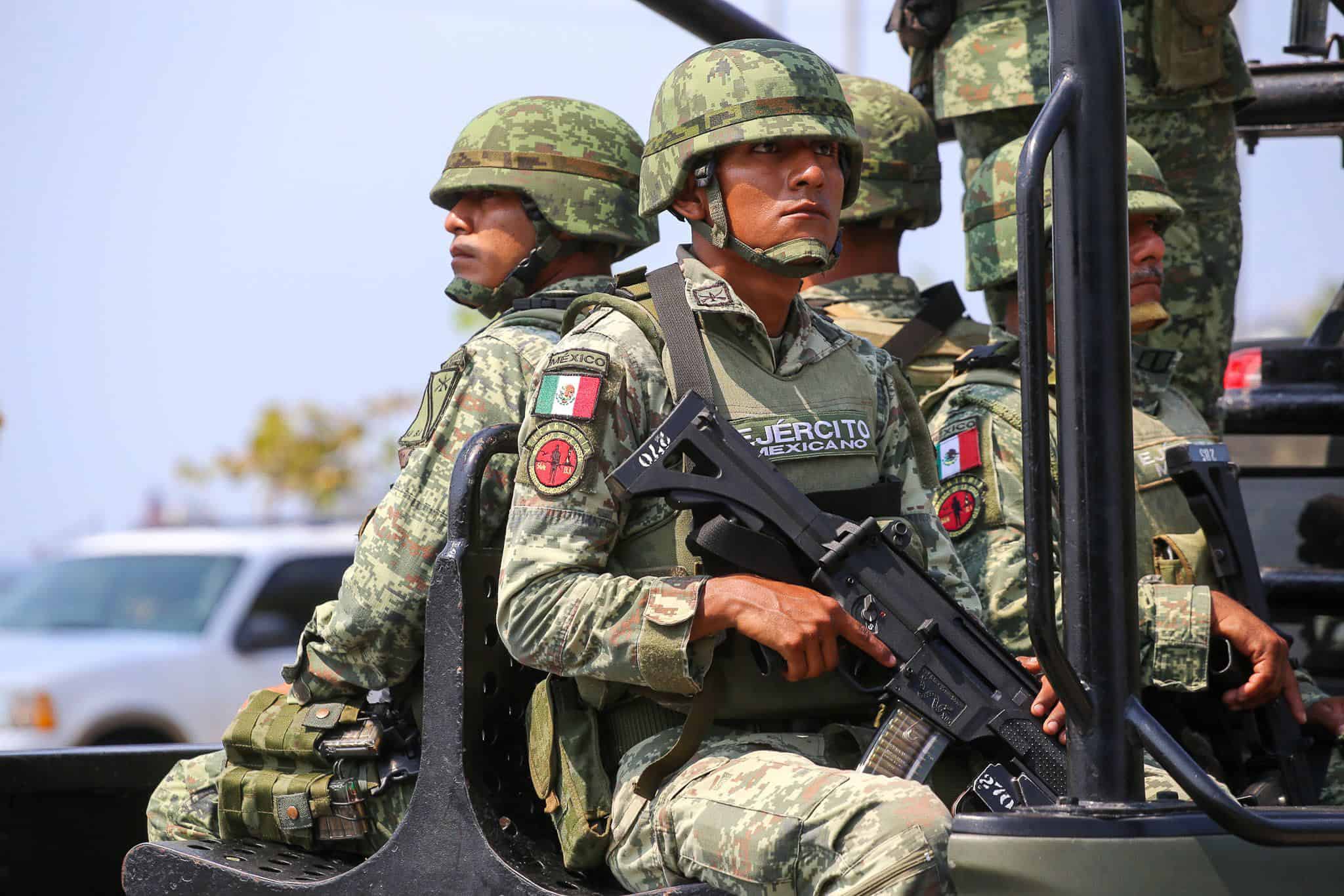
Arrests are made in connection with some homicides, but impunity remains extremely commonplace in Mexico, with less than 4% of criminal investigations solved.
“The criminals are emboldened, because they know there’s practically zero chance of facing any punishment,” Eduardo Guerrero, a Mexico City-based security consultant, told The New York Times.
In May, we reported that President López Obrador supported a proposed pact for peace with Mexico’s notorious drug cartels, while in September we published stories on a survey that found that over 20 million Mexicans were victims of crime last year, and one study that concluded that cartels are collectively one of the largest employers in the country.
There was some good news in 2023 within the realm of crime and security: Authorities arrested several high-ranking criminal leaders including the Sinaloa Cartel’s Ovidio Guzmán, who was extradited to the United States in September, and César Alejandro Silva Delgado, an alleged Northeast Cartel plaza chief.

Another significant event was the conviction in the United States of former security minister Genaro García Luna on drug trafficking charges. He has not yet been sentenced.
Accidents and other tragic incidents take a heavy toll

In addition to violence, accidents and other fatal incidents claimed the lives of many Mexicans this year. Listed below, in chronological order, are some of the ones we reported on.
Mexico swelters through heat waves as drought afflicts most of the country
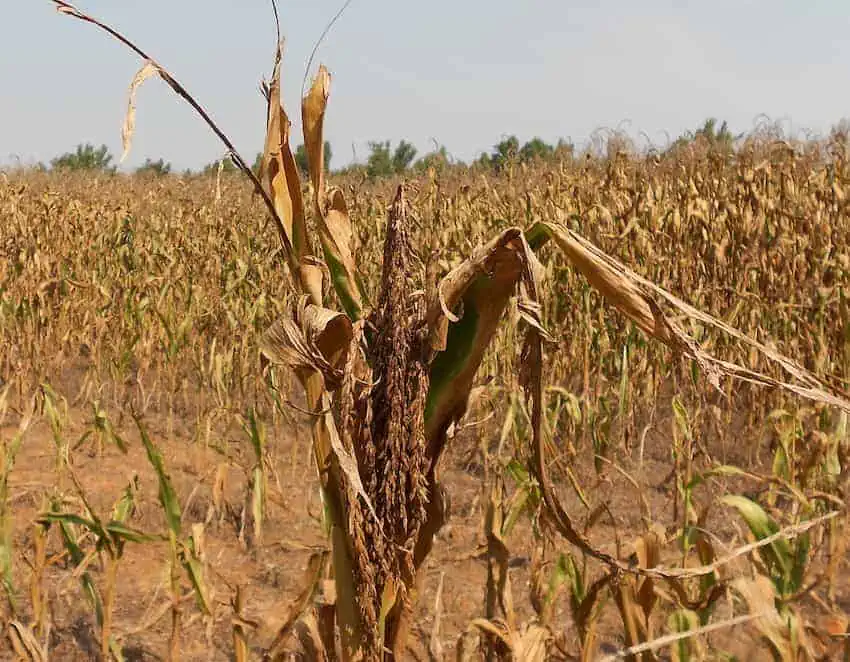
We reported in late June that hot weather was a major factor in 112 deaths in Mexico between March 19 and June 24, with the vast majority occurring during Mexico’s third heat wave, a three-week period of sweltering conditions in June.
By October — when Mexico’s official “hot season” ended — the number of heat-related deaths had risen to 421, a figure 10 times higher than the number recorded last year.
Almost two-thirds of the deaths occurred in just three northern border states known for extremely hot weather: Sonora, Nuevo León and Baja California.
With millions of Mexicans enduring oppressive conditions in the middle of the year, it wasn’t surprising that there was a significant increase in sales of fans, air conditioners, hats and sunscreen.
In addition to heatwaves, Mexico was afflicted by widespread drought this year. We reported in early October that three-quarters of Mexico (74.96% of national territory to be precise) was officially in drought, up from just 12.66% of the country a year earlier.
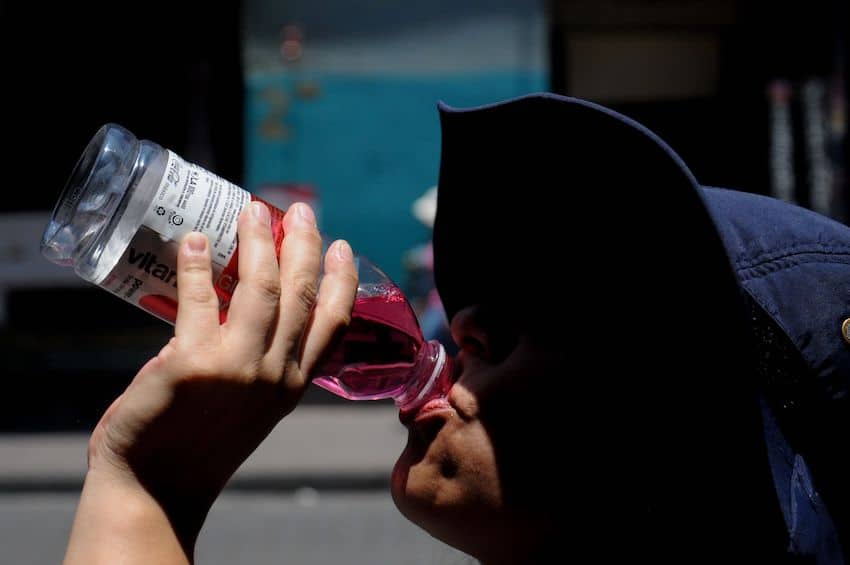
The lack of rain depleted dams, caused crop failures and claimed the lives of large numbers of livestock in different parts of the country.
“We are experiencing a tremendous crisis,” Adalberto Velasco Antillón, president of the Regional Livestock Union of Jalisco, said in September. “Thousands and thousands of cattle have died due to the drought problem.”
In a “Mexico in Numbers” report published last month, we noted that “not since 2012 has drought in Mexico been so widespread — with 1,614 municipalities across the country in a state of drought.”
Mexico’s Drought Monitor, published every two weeks by the National Meteorological Service, shows that drought conditions eased through October, November and the first half of December, with just over 47% of national territory classified as being affected by some level of drought on Dec. 15.
But widespread drought is likely to be a persistent problem in Mexico, with annual rainfall levels trending downward over a period of decades. According to the World Resources Institute, Mexico has the 26th highest “water stress” levels in the world.
AMLO vs the Supreme Court
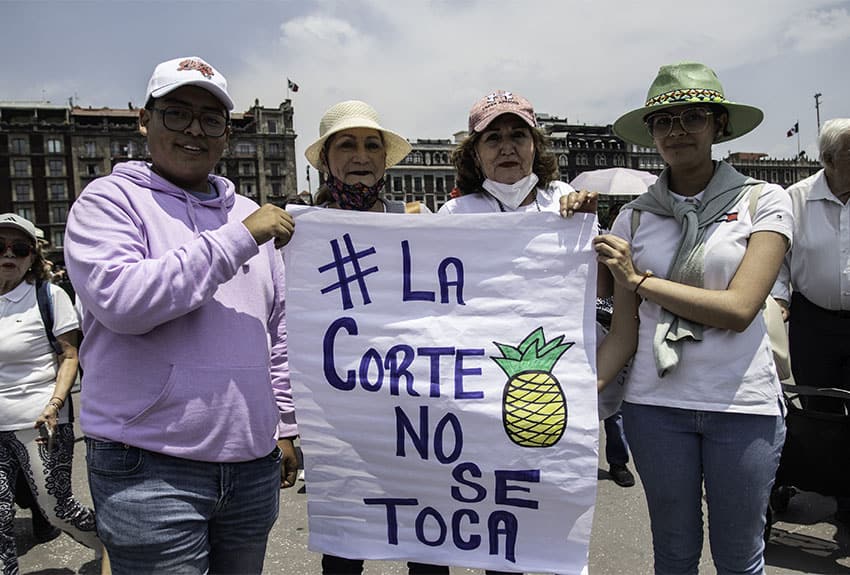
In October, employees of Mexico’s judicial system protested across the country against a proposed cut to funding for the federal judiciary.
The presence of protesting court workers on the streets was a very visible manifestation of a long-running battle between the nation’s judiciary and President López Obrador, who frequently criticizes judges, accuses them of handing down rulings that favor the nation’s wealthy elite rather than ordinary people, and rails against the high salaries earned by some of them, such as Supreme Court (SCJN) justices.
While AMLO succeeded in angering court workers by proposing — and achieving — the elimination of 13 public trusts that help fund the judiciary, Mexico’s highest court angered the president on repeated occasions this year when it handed down rulings against his government.
In 2023, the SCJN handed down decisions against the government’s transfer of control over the National Guard from the civilian Security Ministry to the Defense Ministry, its electoral reform package and a 2021 presidential decree that sought to fast-track and protect government infrastructure projects from legal challenges.
The Senate’s approval of the so-called “Plan B” electoral reform in February triggered protests in more than 100 Mexican cities, with protesters demanding that the government keep its hands off the National Electoral Institute, the autonomous agency responsible for organizing and overseeing elections in Mexico.
López Obrador asserts that Mexico’s judicial branch of government needs to be “renewed” and that ordinary citizens must contribute to the “renewal” because “the people are the ones who can purify public life.”

Consequently, he intends to propose a constitutional change in 2024 that would allow citizens to directly elect Supreme Court justices and other judges. The success of such an initiative will likely hinge on Morena and its allies winning a supermajority in both houses of Congress at next year’s election.
In other significant judicial news this year, the SCJN decriminalized abortion at a federal level in September, while in an unprecedented act last week, López Obrador directly appointed Mexico’s newest Supreme Court justice after the Senate failed to endorse any of the candidates he put forward.
Five SCJN justices have been appointed during the term of the current government, but — in another swipe at the court — AMLO claims that two of them have “betrayed” his political agenda.
A breakthrough in the fight against fentanyl?
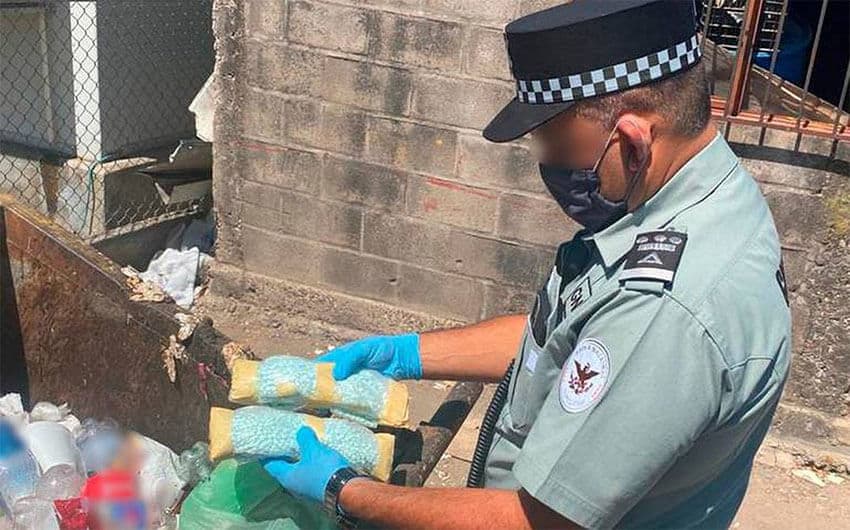
The fight against fentanyl — the powerful synthetic opioid largely responsible for the overdose crisis in the United States — was a dominant issue in various meetings between Mexican and U.S. officials in 2023.
Time and time again — at the North American Leaders’ Summit in Mexico City in January, at security talks in Washington D.C. in April, at another round of security talks in Mexico City in October, at a bilateral meeting between President López Obrador and President Biden in San Francisco in November — Mexico and the United States highlighted their commitment to combating fentanyl trafficking and working together to do so.
There appeared to be a breakthrough last month when Biden and Chinese President Xi Jinping agreed at talks in California that China — a major supplier of precursor chemicals used to make fentanyl — would work to stem the export of goods related to the production of the opioid.
In his own meeting with Xi last month, López Obrador spoke about “the need to exchange information and lessons learned in the fight against the illicit trafficking of precursor chemicals” used to manufacture fentanyl.
AMLO revealed in April that he had written to his Chinese counterpart to seek his support in the fight against fentanyl after a group of United States lawmakers requested that he ask China not to send the synthetic opioid and precursor chemicals to Mexico, the United States and Canada.
A Chinese Foreign Ministry spokesperson subsequently declared that “there is no such thing as illegal trafficking of fentanyl between China and Mexico,” but the Chinese government now appears to accept that the opposite is true.

Amid criticism from some U.S. Republican Party politicians that Mexico isn’t doing enough to combat fentanyl and the criminal groups that ship it north, Mexican officials have been at pains to demonstrate that the federal government’s commitment to the fight against the drug is indeed wholehearted. The government has frequently provided data on confiscations to prove its point.
Foreign Affairs Minister Alicia Bárcena told the United Nations General Assembly in September that Mexico accounted for a quarter of global fentanyl seizures between 2020 and 2023, while her predecessor, Marcelo Ebrard, said in March that Mexico has been “the United States’ main ally in the fight against fentanyl.“
While there is no apparent shortage of illicit fentanyl in the United States, there is evidence that suggests that Mexican criminal organizations such as the Sinaloa Cartel — numerous members of which were the subject of sanctions announced by the U.S. this year — are sending less of the drug north.
Data from U.S. Customs and Border Protection shows that the quantity of fentanyl seized at the Mexico-United States border fell almost 60% between April and October.
Migration another key focus of the Mexico-U.S. relationship
On the very first business day of 2023, thousands of migrants descended on the offices of the Mexican Commission for Refugee Assistance (Comar) in Tapachula, a city in Chiapas located just north of the border with Guatemala.
It was a continuation of what we’ve seen in recent years and an omen of things to come, with applications for asylum in Mexico hitting a record high this year.

However, the ultimate goal of most of the migrants who enter Mexico via its southern border is to reach the United States. Obtaining documents from Comar or the National Immigration Institute can protect them from arrest as they move through the country.
U.S Customs and Border Protection encountered a record high of almost 2.5 million migrants at the U.S.-Mexico border in fiscal year 2023, which ended in September.
The surge in arrivals ensured that migration was another key focus of bilateral talks between Mexico and the United States this year, including the High Level Security Dialogue in Mexico City in October, the meeting between López Obrador and Biden in San Francisco last month and the two leaders’ telephone call this week.
Addressing the root causes of migration, mainly through foreign aid and development programs, has long been a shared goal of the two countries, but AMLO believes that the United States could do more, and has urged the U.S. Congress to approve additional funding for the region.
During his meeting with Biden last month, López Obrador — who hosted a regional migration summit in Chiapas in October — said that the United States’ new legal migration pathways for citizens of countries including Venezuela, Nicaragua and Haiti are “a humane way to address the migratory phenomenon” and noted that Biden “is the first president in the United States in recent times who has not built walls.”
However, the Biden administration has replaced sections of wall, and Secretary of Homeland Security Alejandro Mayorkas announced in October that the U.S. government — effectively because it has no other option — would “install additional physical barriers and roads in the Rio Grande Valley Sector” in Texas, a move AMLO described as a “a backward step” that won’t solve the migration problem.
With upcoming elections in both Mexico and the United States — and with large numbers of people continuing to leave their homelands to seek a better life in the U.S. — migration is set to remain a major issue on both sides of the border in 2024.
By Mexico News Daily chief staff writer Peter Davies ([email protected])